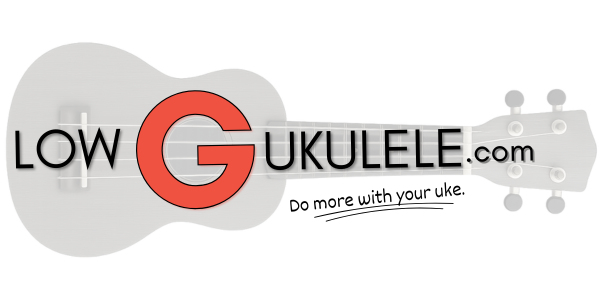Click here to jump straight to the TAB.
| Click the play button to hear “The Wellerman” for low G ukulele. |
3/20/2025 UPDATE: I’ve uploaded an audio track of “The Wellerman.” Click the play button above to listen!
When the sea shanty trend took social media by storm a few years back, “The Wellerman” was by far the most popular, at least in my feeds. I have a soft spot for sea shanties in general–in fact, I am looking right this moment at a book filled with more than 50 of the traditional tunes arranged for mandolin. While “The Wellerman” is probably the most popular shanty going at the moment, it definitely won’t be the last one you see appear on this site.
Like all work songs, sea shanties feature simple, driving melodies that are easy to sing and remember, which makes them perfect for beginner ukulele. In fact, the melody of “The Wellerman” is about as simple as it gets. The challenge here lies in the chords.
“The Wellerman” Playing Tips
To challenge yourself while playing this simple melody, be strict about keeping your left hand in 1st position. Assign each finger a fret (index=1, middle=2, ring=3, pinky=4), and ALWAYS play the notes at the fret with the proper finger.
It’s easy to get lazy and let your hand drift around, using whichever finger feels easiest or most convenient in the moment. But using all four fingers is an important skill to develop for the future, and it’s a lot easier to learn it now on simple songs than to try to re-learn it later when you’re playing something more complicated. Don’t neglect that pinky!
Those Chords…
The real challenge of “The Wellerman” is the chords. There are five different chords total, two of them minor…and then there’s that Eadd4. What in the world is an add4 chord?
An add4 chord is exactly what it says it is–a chord that adds the 4th note of the scale. Since the modified chord here is an E major, the base chord uses the 1st, 3rd, and 5th notes of the E major scale. And then the add4 throws in the 4th. It gives the chord a somewhat discordant, open sound that works very well with the minor key of this tune.
For the music theory enthusiasts out there, I suppose this would more appropriately be called an Eadd11 because the A is the highest note of the chord. Calling it an add4 just seemed less confusing in this context.
The good news is that while the chord looks intimidating on paper, it’s really just a D chord shifted up two frets, leaving the A string open. If the chord is too difficult for you at the moment, you can also play it with just two fingers and leave the E string open. The third string is playing that same E, so you’re doubling a note and leaving the chord a little incomplete, but still entirely usable.
Click the link or the ‘Download’ button below to see the sheet music if your browser doesn’t display the embedded PDF. Happy picking!
| Click the play button to hear “The Wellerman” for low G ukulele. |

Leave a Reply